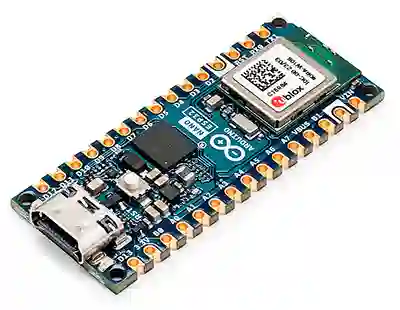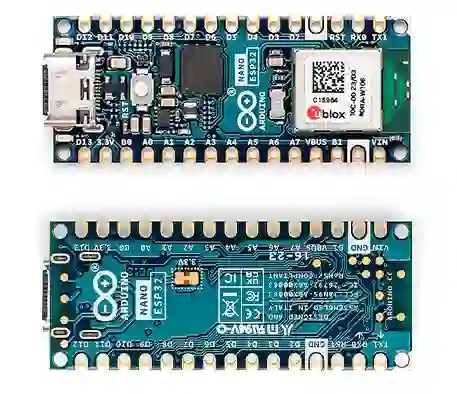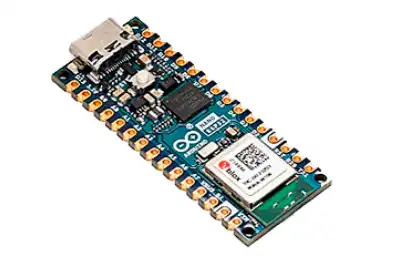Arduino has presented its new Arduino Nano ESP32 development board. A well-deserved facelift of one of Arduino’s most popular models, which becomes much more powerful and incorporates WiFi and Bluetooth.
A few days ago we were talking about the new Arduino UNO R4 Minima and WiFi boards Discover the new Arduino UNO R4 Minima and WiFi boards. Now, Arduino surprises us with this renewed version of the Arduino Nano.
As the model name indicates, the most interesting point of the new model is that it mounts a powerful ESP32-S3 processor from Espressif, the flagship of the Chinese manufacturer’s SoC.

The ESP32-S3 is an old friend of the blog. You can read more about it in the article ESP32-S3 or in the section ESP8266/ESP32
This is not the first time that Arduino includes an ESP32 in one of its models. We already saw it, for example, in the new Arduino UNO R4. But, up to now it had been in a dual configuration with two CPUs, in which the ESP32 was in charge of WiFi connectivity.
The Arduino Nano ESP32 is the first official Arduino board that mounts an ESP32 as the main processor. We assume that, as they say, if you can’t beat the enemy, join them. 😊
Here are some of the features of the new Arduino Nano ESP32:
- Processor: u-Blox NORA-W106-10B, based on a dual-core Xtensa LX7 ESP32-S3 microcontroller, which can reach speeds of up to 240 MHz.
- Memory: 512 KB of SRAM, 384 KB of ROM, 8 MB of PSRAM, 16 MB of flash
- WiFi 4 and Bluetooth 5.0 connectivity
- USB type C port for power and programming
- Connections: 2 headers 15 pins
- 14x GPIO, 5x PWM, 8x ADC, 2x UART, 1x I2C, 1x SPI, reset and power signals (+5V, +3.3V, GND, Vin, AREF, …)
- HID support (emulate keyboard and mouse)
- Operating voltage: 3.3V
- I/O pin current: 40 mA output, 28mA input
- Reset button and 2 LEDs
- Power supply: 5V via USB, 6-21V via the Vin pin on the headers
- Dimensions: 45 x 18 mm, compatible with the original Arduino Nano
One of the most remarkable aspects of the Arduino Nano ESP32 is that it maintains the same form factor as the original Arduino Nano. It is important to note that the pinout and voltages are not compatible. Therefore, a direct replacement is not possible.
However, in terms of GPIO, connections, and communication ports, the Arduino Nano ESP32 barely exploits half of the potential of the ESP32-S3. This is a consequence of maintaining the same size. A decision, in my opinion, is correct, but it means having a very limited number of pins.

Regarding software, the Arduino Nano ESP32, of course, is compatible with the entire Arduino environment and with the C++ language. On the other hand, the company emphasizes compatibility with MicroPython and with Arduino’s proprietary Cloud, Arduino IoT Cloud.
In this way, the Arduino Nano is once again positioned as an attractive option for the home sector, DIY, and STEAM education, sectors that are progressively being oriented.
In terms of price, the Arduino Nano ESP32 is available on the market for €18 plus shipping costs. A reasonable price, but higher than what Arduino traditionally offers for its Nano series, which was usually in the range of €9-10.
It is expected that, as usual with Arduino, the documentation, support, and ease of use of the new model will be excellent. But, above all, as is usually the case with the brand’s innovations, it will have the support of the enormous and great community. These are undoubtedly the strongest points of Arduino’s proposals.
This compensates, to some extent, the shortcomings compared to the competition. In the end, the new Arduino Nano ESP32 is a board that mounts an ESP32-S3, like the one we found some time ago in many other manufacturers. But with fewer features and more than triple the price.
In any case, the new Arduino Nano ESP32 is an interesting board, and a very welcome step in the modernization of Arduino’s traditional models to more current technologies, such as the Arduino UNO and the Arduino R4.
Interestingly, it also means the consolidation of the ESP32 as the chip of the moment. Something that, modesty aside, we have been saying for a long time on the blog 😉.
The new Arduino Nano ESP32 is now available in the company’s store. For more technical details and getting started instructions, the official documentation can be consulted.
References:
